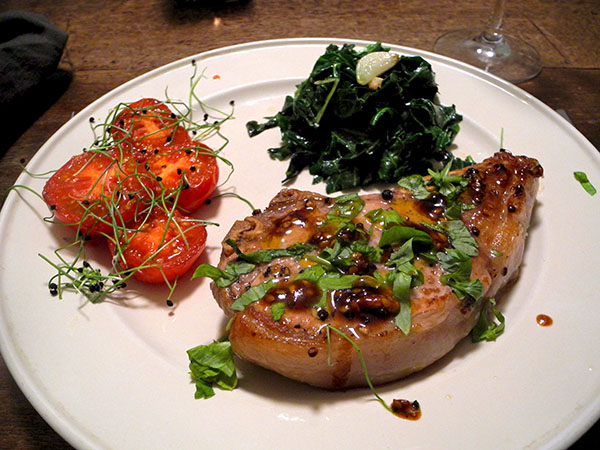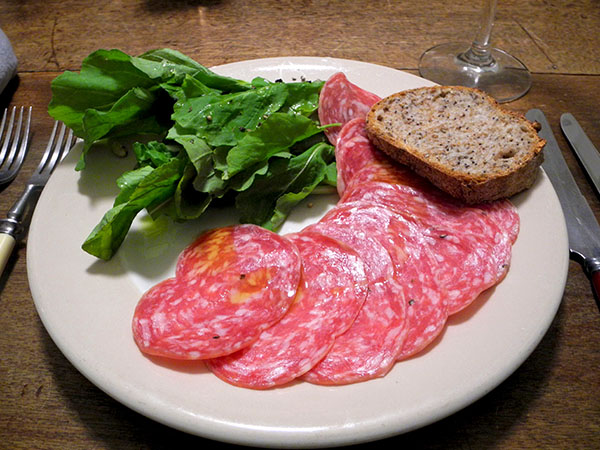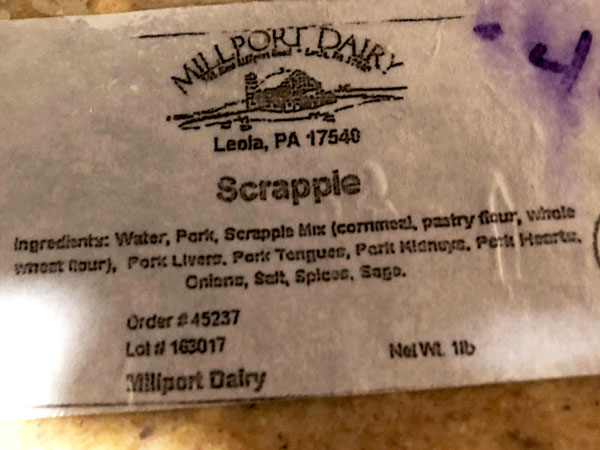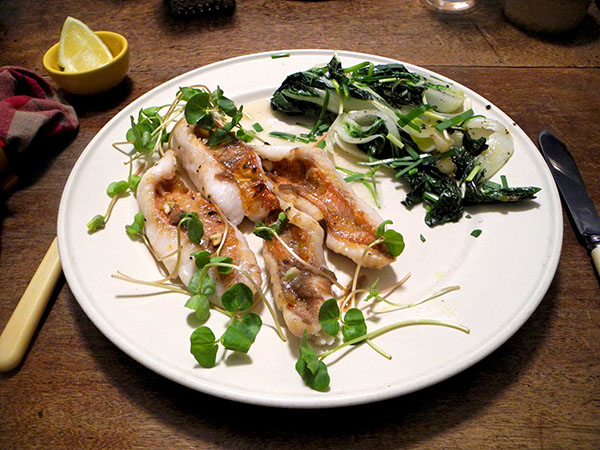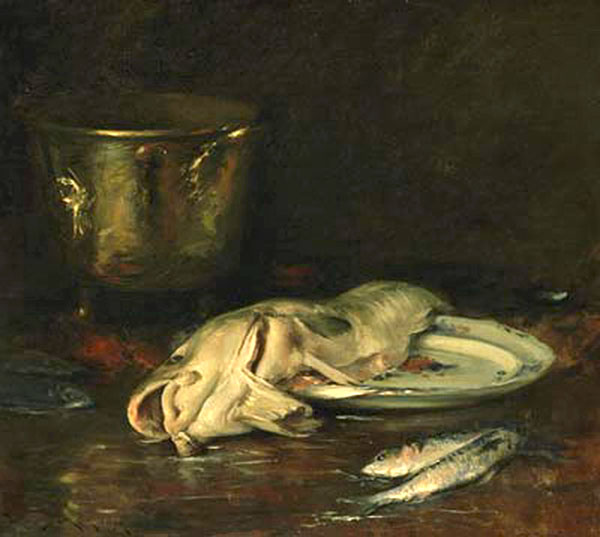
William Merritt Chase, ‘An English Cod’ 1904
This dinner, I had determined at the time we sat down, wasn’t going to be included on this site: Because we were sharing it with guests Seb and Joe, because I had been very much distracted by the more-than-lively conversation throughout its preparation, and just because we were having so much fun, I didn’t want to interrupt things just to photograph it. Barry and I were both surprised I even managed to put it together.
But once I realized how delicious it was, and because I wanted our guests to know what was in it, I changed my mind about a post, even if I had no photos to accompany it.
I knew I could find an exciting image somewhere to put at the top, but I didn’t know it would be of a painting of a rented cod (I’d bought our cod, and there were no sardines).
Before the dinner itself, we enjoyed some Fiori di Puglia pepperoncino-flavored taralli from Buon Italia.
We began the meal itself with a local salumi.
- Cesare Casella’s Giorgio’s Salami New York spicy coppa, from Eataly, drizzled with drops of a very good Sicilian olive oil from from Agricento, Azienda Agricola Mandranova (exclusively Nocellara olives), arranged with a few leaves of arugula from Lani’s Farm, dressed with sea salt, a bit of the same oil, and drops of juice from an organic Whole Foods Market lemon
- served with slices from a loaf of ‘rustic classic’ from Eataly
- the wine was an Italian (Piedmont), Erbaluce di Caluso ‘La Torrazza’, Ferrando 2014, from Astor Wines
I’ve prepared the fish entrée that followed so often that I could almost do it with my eyes closed. Actually, I almost had to do that on Friday , since the main, overhead light popped out half of the way through my labors in the in the kitchen. In the end it was the best version ever, which is one of the reasons I’m writing this now.
Incidentally, hake, or whiting could be substituted for the cod.
- one long absolutely white fillet of Atlantic cod (25 ounces) that had been caught off eastern Long Island the day before, from Pura Vida Seafood, prepared mostly following an old recipe from Mark Bittman that I had come across years ago: the cod washed and rinsed, placed in a platter on a bed of coarse sea salt, with more salt added on top until the piece was as completely covered as possible (because of its length, with this one I had to be sure to apply salt between the 2 surfaces of the tail end as I flipped it over to keep it inside the edges of the platter), then set aside while a bed of potatoes was prepared for them by slicing nearly 2 pounds of really wonderful ‘pinto potatoes’ (or ‘pinto gold’) from Norwich Meadows Farm to a thickness of less than 1/4 inch, tossing the potatoes in a large bowl with olive oil, sea salt, freshly-ground black pepper, and a large pinch of orange/gold home-dried Habanada pepper [acquired in the fall of 2016 from Norwich Meadows Farm], arranging the potatoes, heavily overlapping this time, because there were so many, in a large rectangular enameled cast iron oven pan, placing them in a 400º oven for 25 minutes or so, or until they were tender when pierced, and half way through that time the cod was removed from the salt and the platter on which it had been resting, and thoroughly immersed or soaked in many changes of cold running water, to bring down the saltiness (the soaking process somehow gives the fish more solidity, which can be easily felt while it’s being handled it at this point), drained and dried, cut, rather expertly I have to say, to produce 4 pieces of equal weight from a very irregular piece of fish, before placing the cod on top of the potatoes, drizzling the pieces with a little olive oil and scattering some freshly-ground black pepper on top, returning the pan to the oven for about 15 minutes (the exact time will always depends on the thickness of the cod), removing the fish with a wooden spatula (or, even much better, 2 wooden spatulas), bringing along with as much of the potatoes as possible with each piece, arranging everything, intact if possible (it was), onto 2 plates, returning to the pan for the remainder of the potatoes, the 4 servings garnished with micro scallions from Windfall Farms
- red kale from Norwich Meadows Farm, sautéed in olive oil in which 2 bruised and halved garlic cloves from Tamarack Hollow Farm had first been allowed to sweat and barely begin to brown, the greens seasoned with salt, pepper, and a little more olive oil
- the wine was a California (Central Coast) white, Rick Boyer Central Coast Chardonnay 2016, also from Naked Wines
- the music during the meal began with conversation alone, and then, when it turned to the subject of music, continued with the sounds of the album, ‘Eastman: Unjust Malaise, with some of the music of Julius Eastman (1940?-1990); I think we went to the fifteenth century after that
[the image is William Merritt Chase, ‘An English Cod’ 1904, oil on canvas, in the Corcoran Gallery of Art since 1905, from this site]
